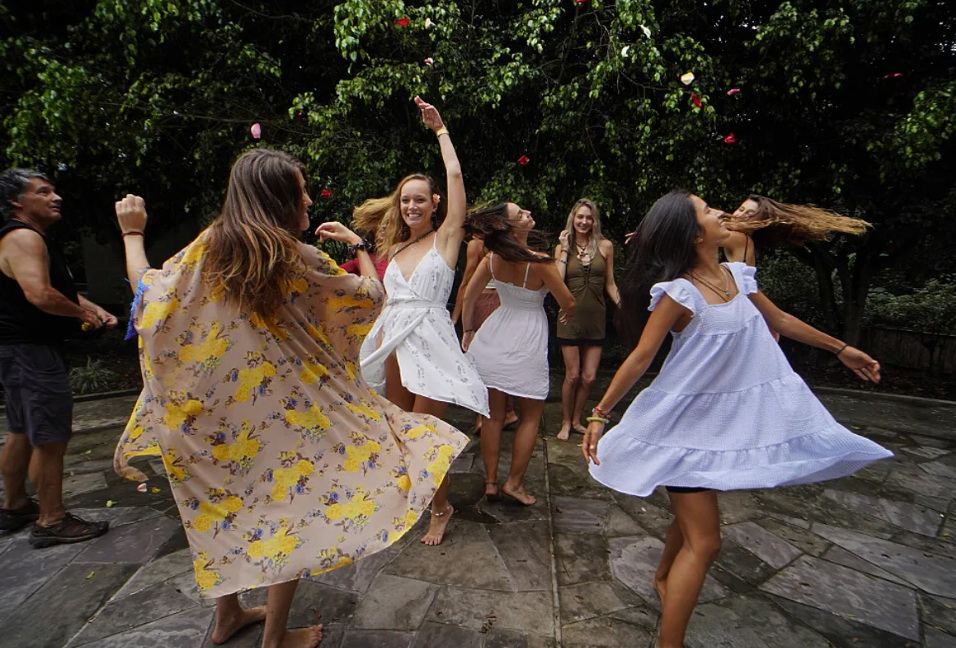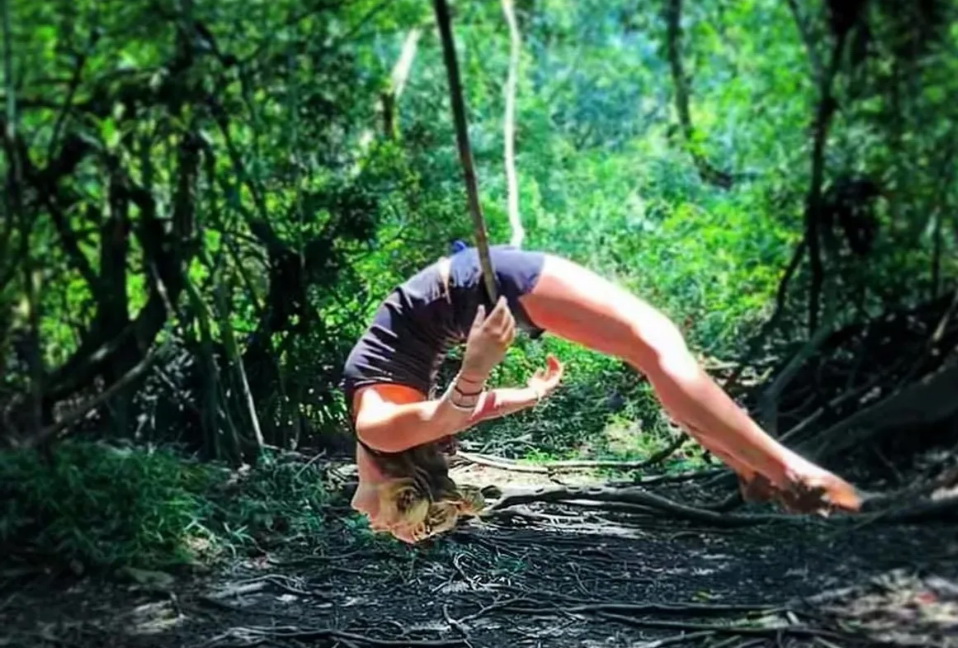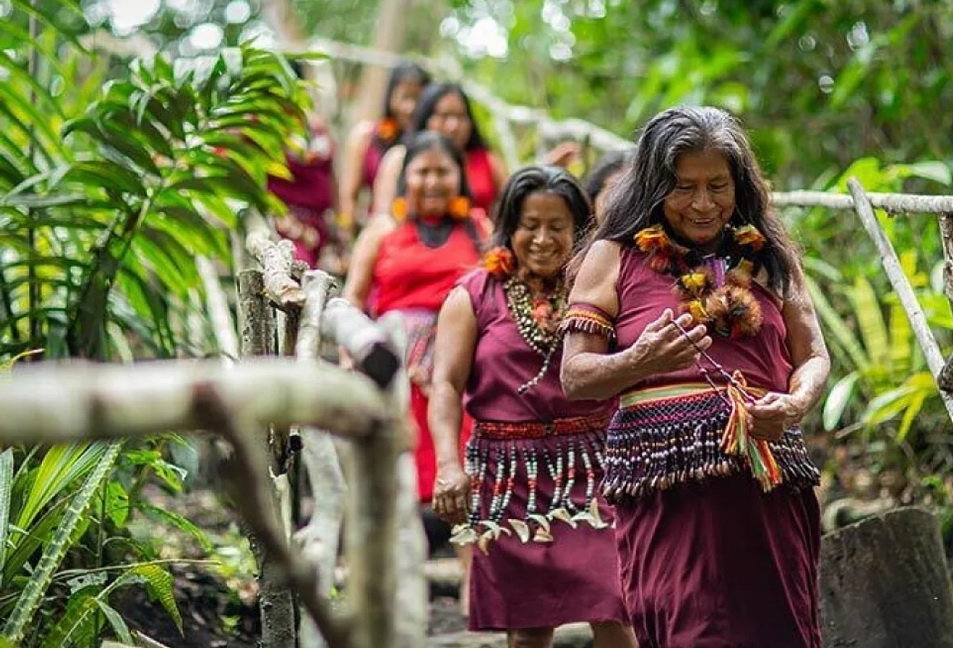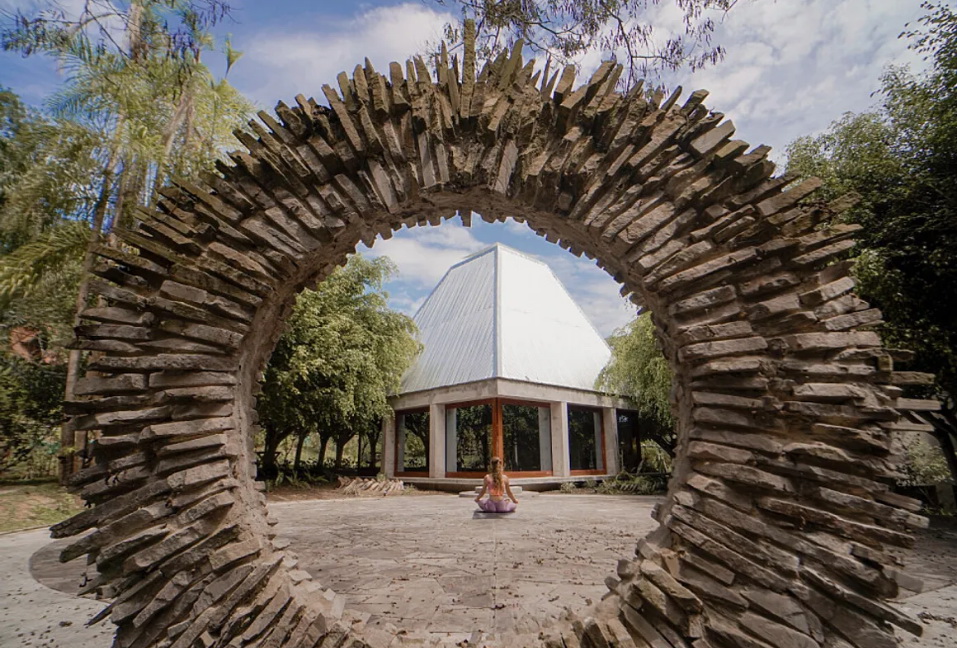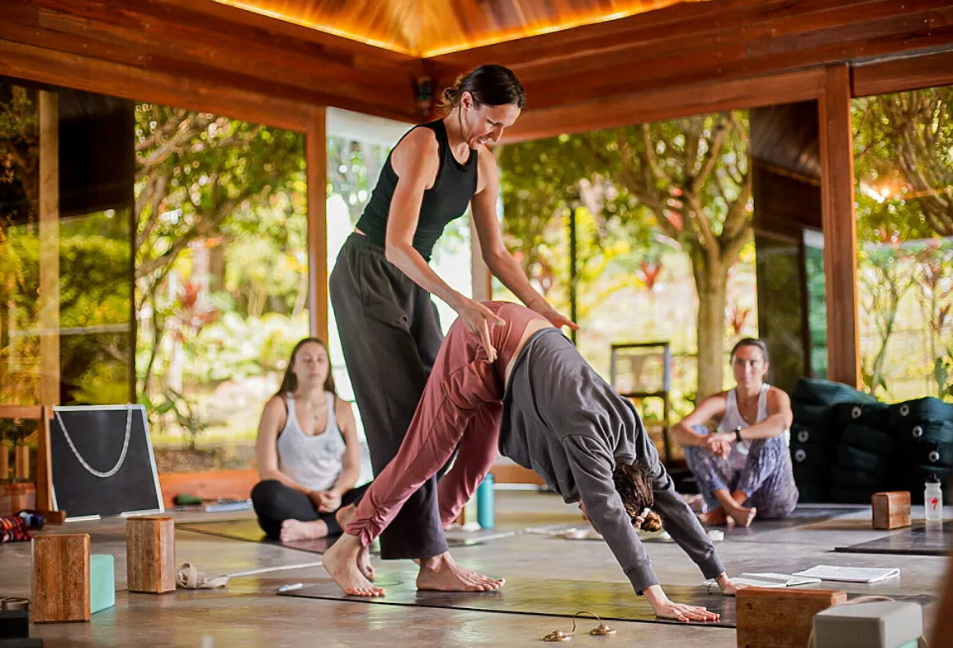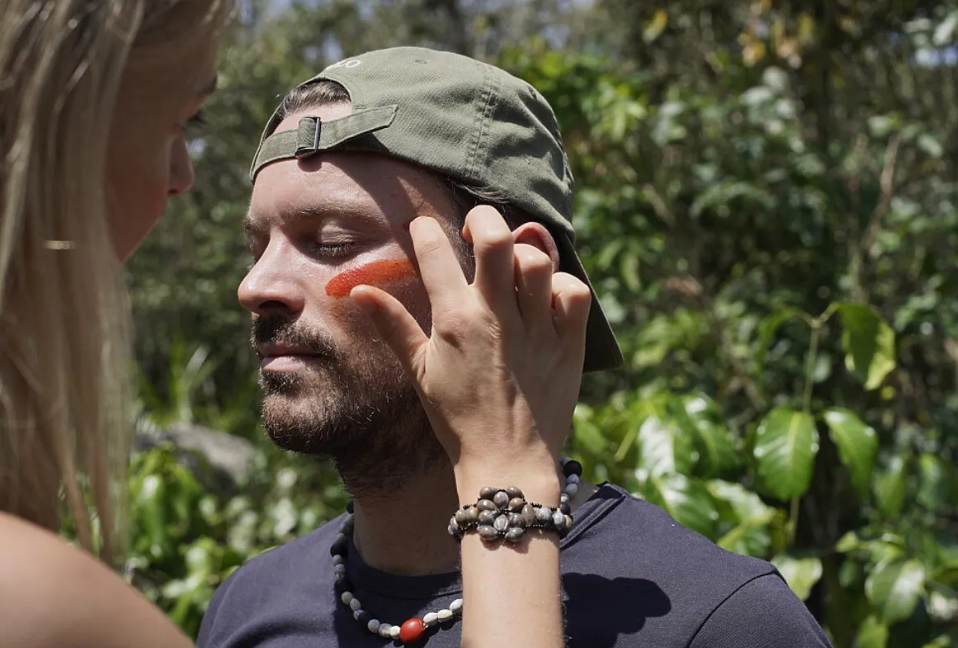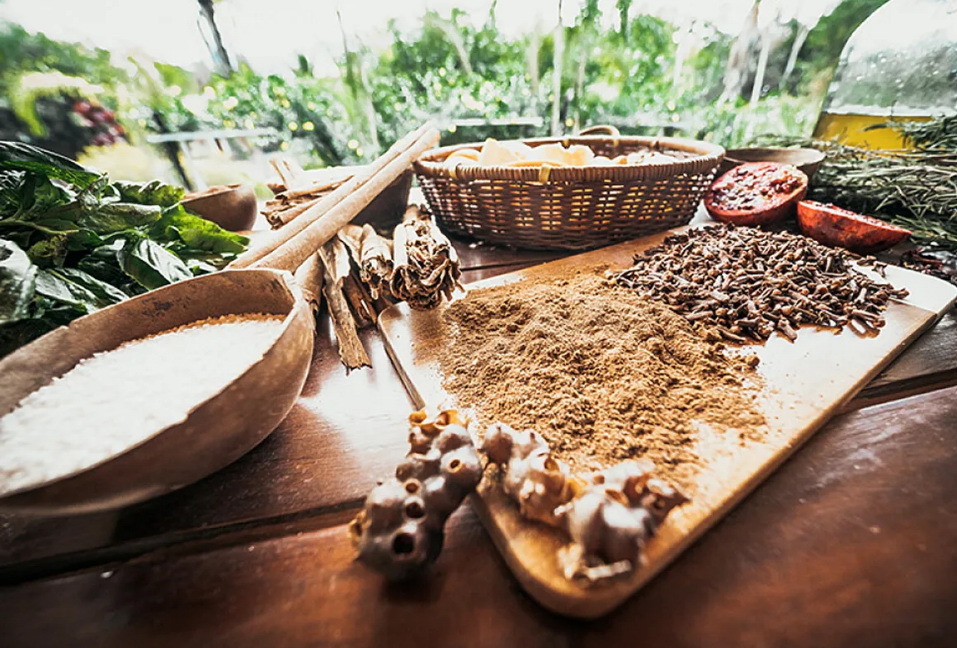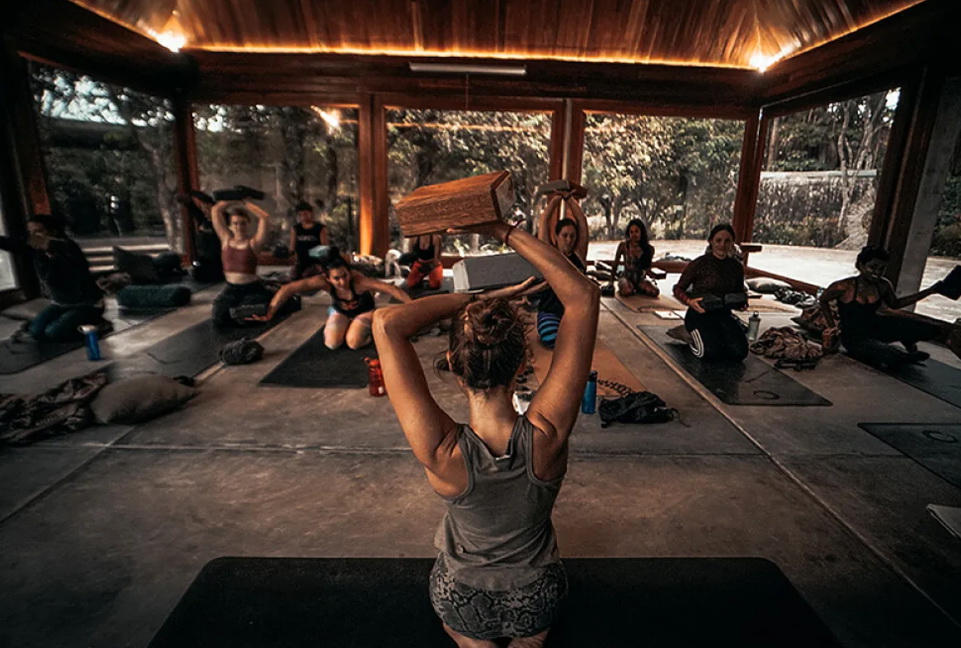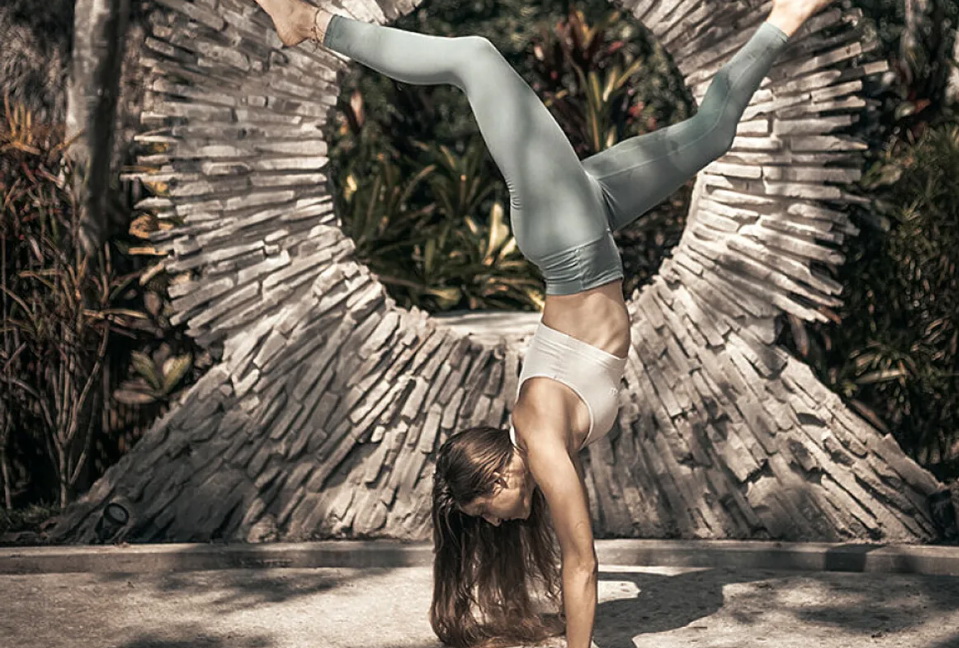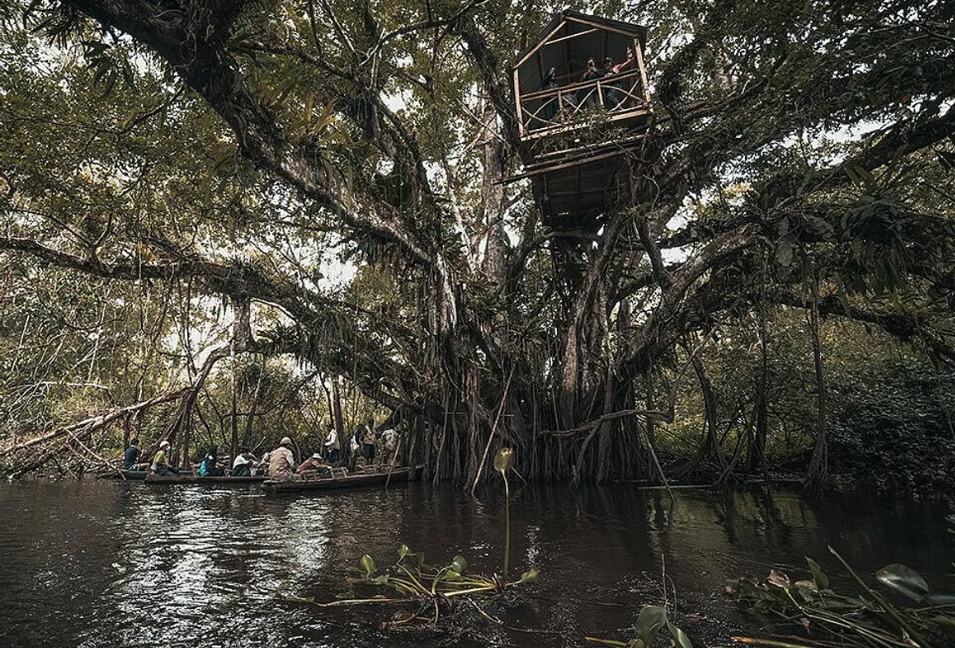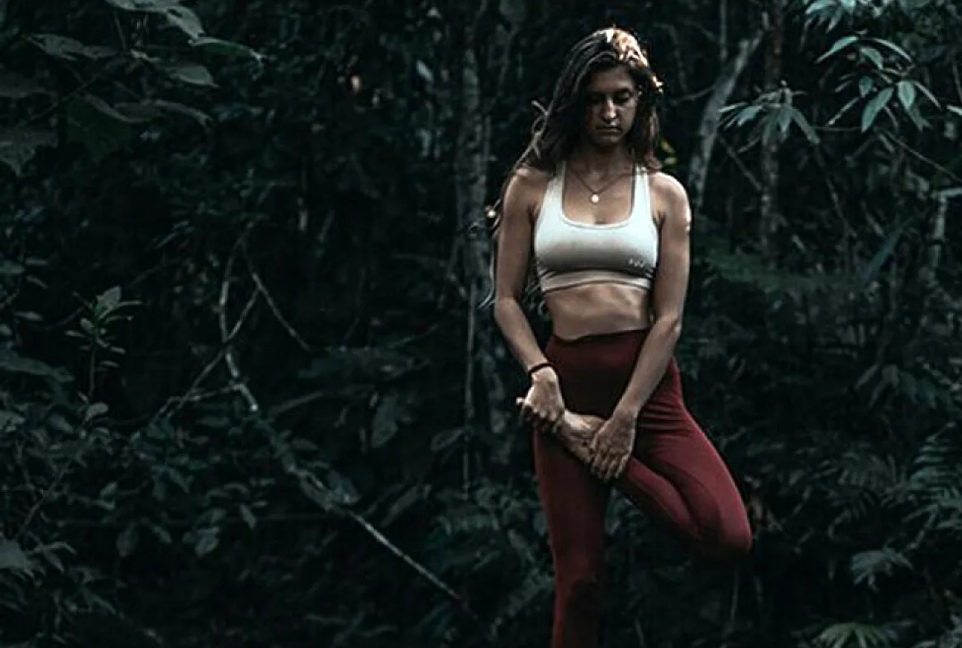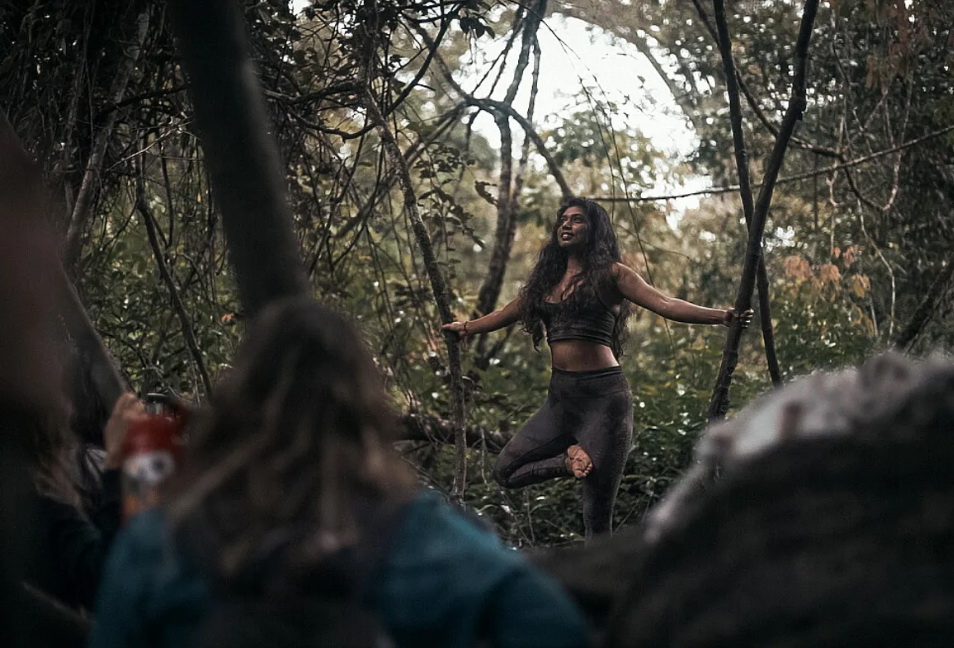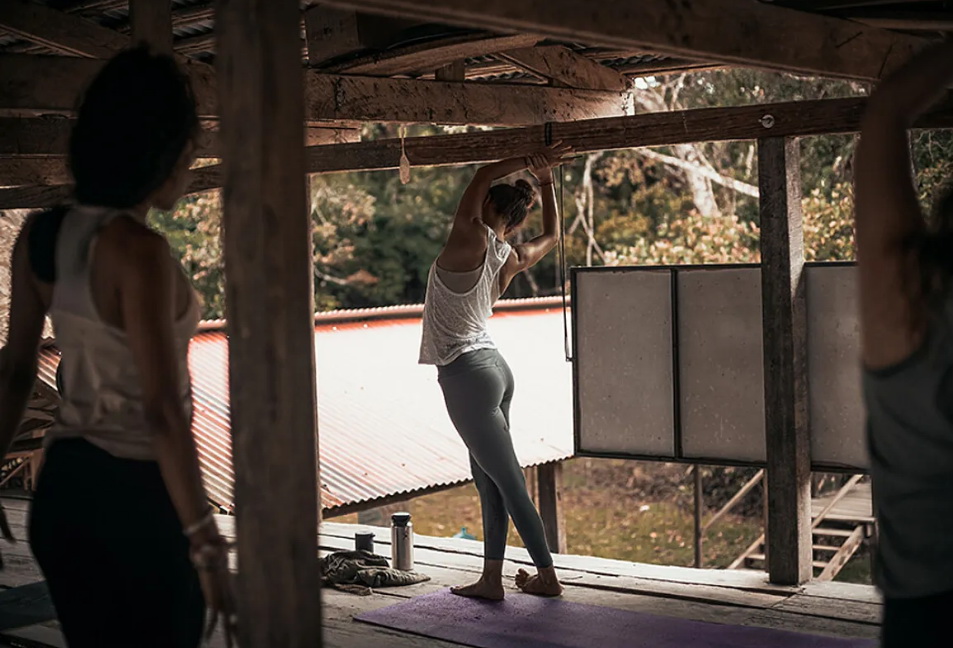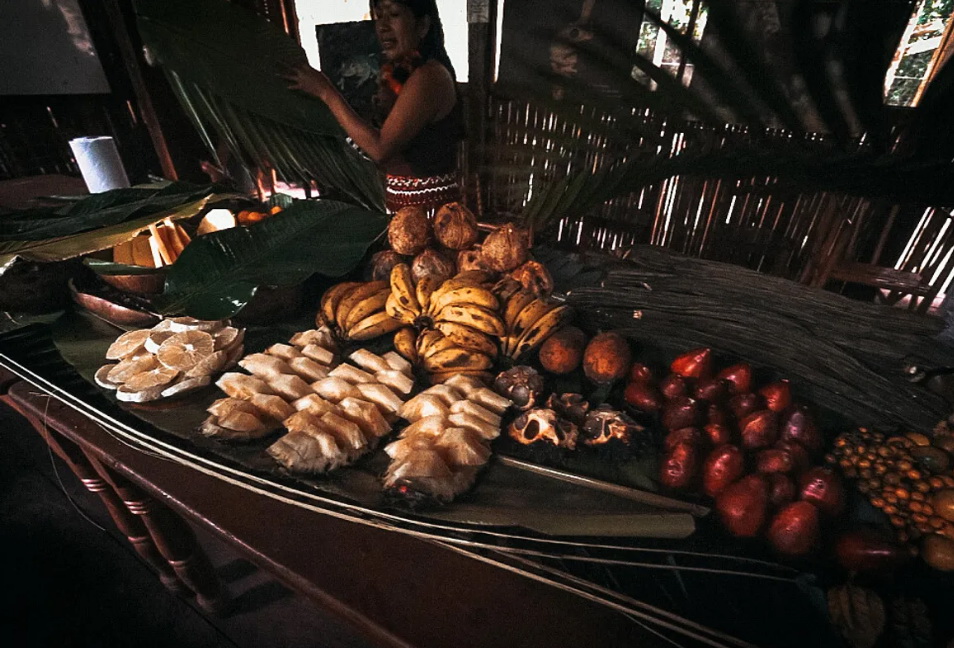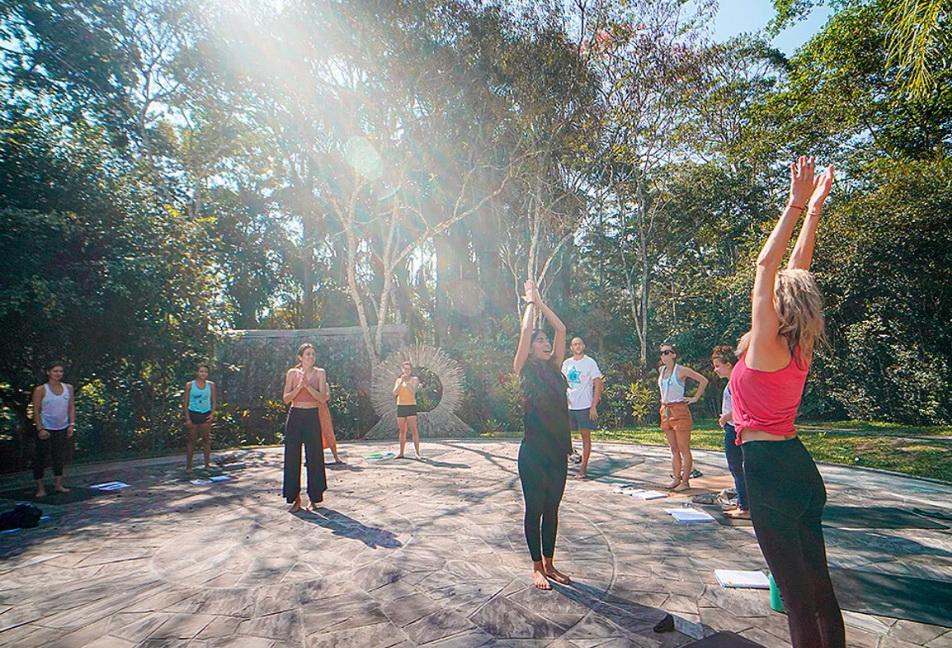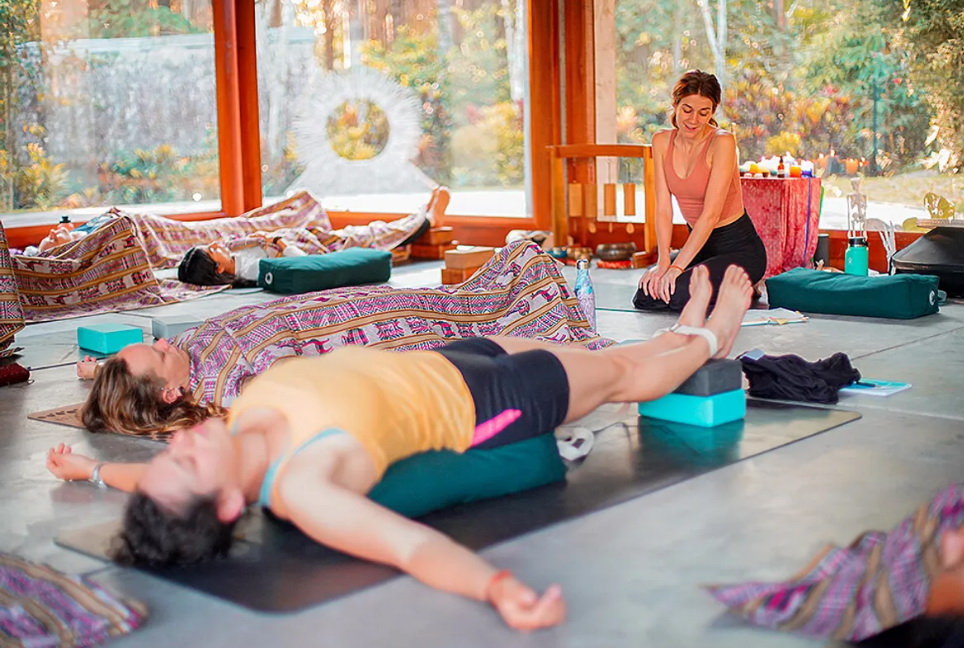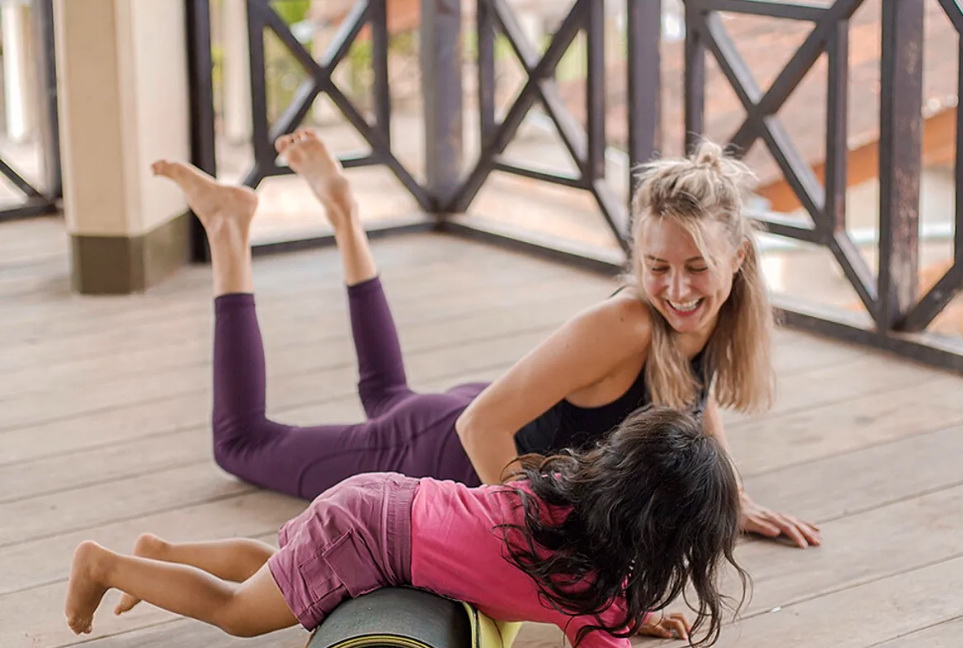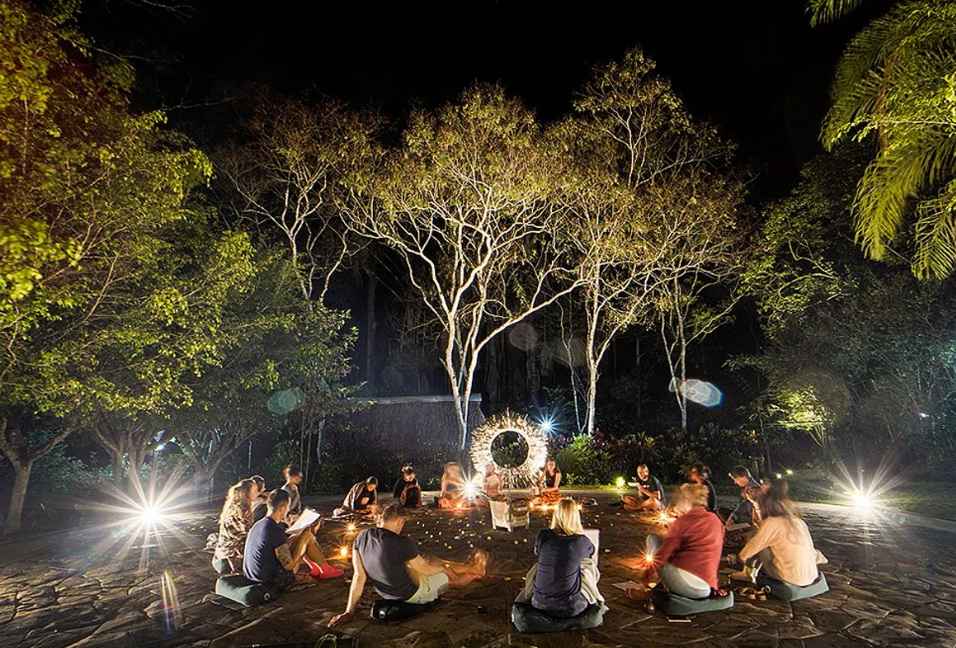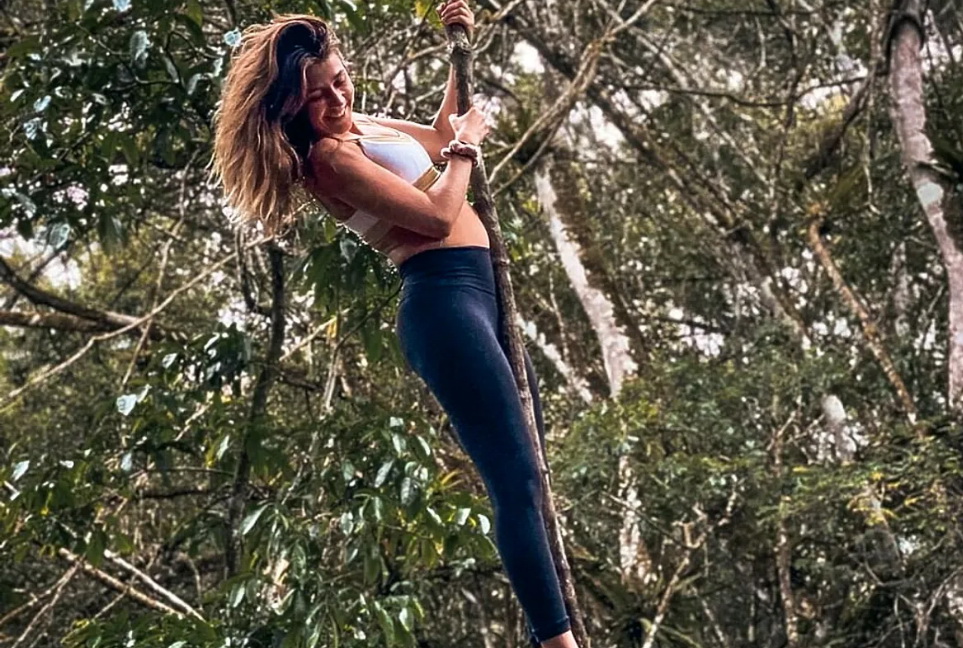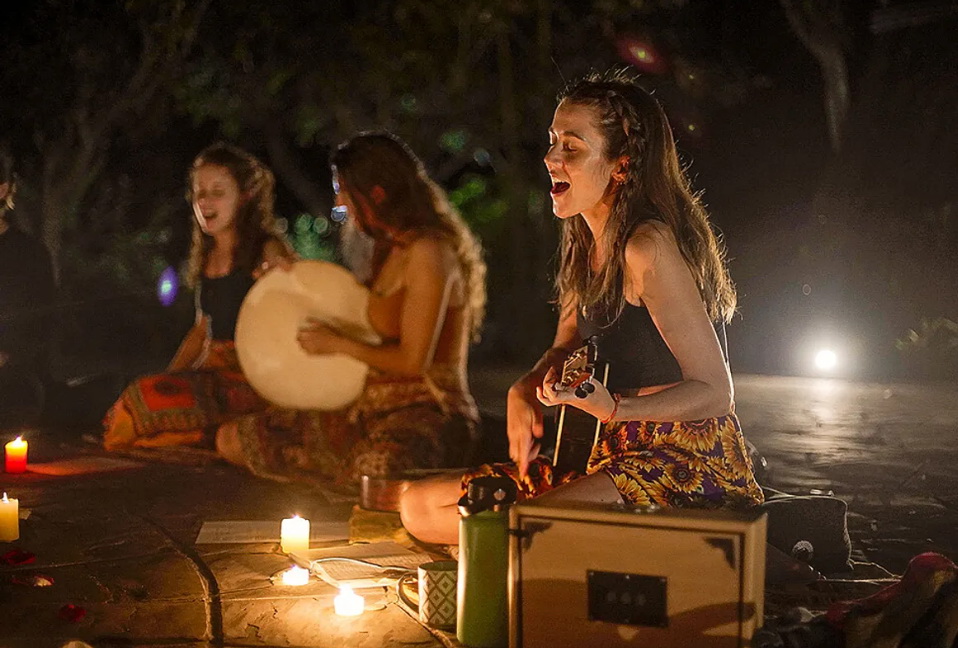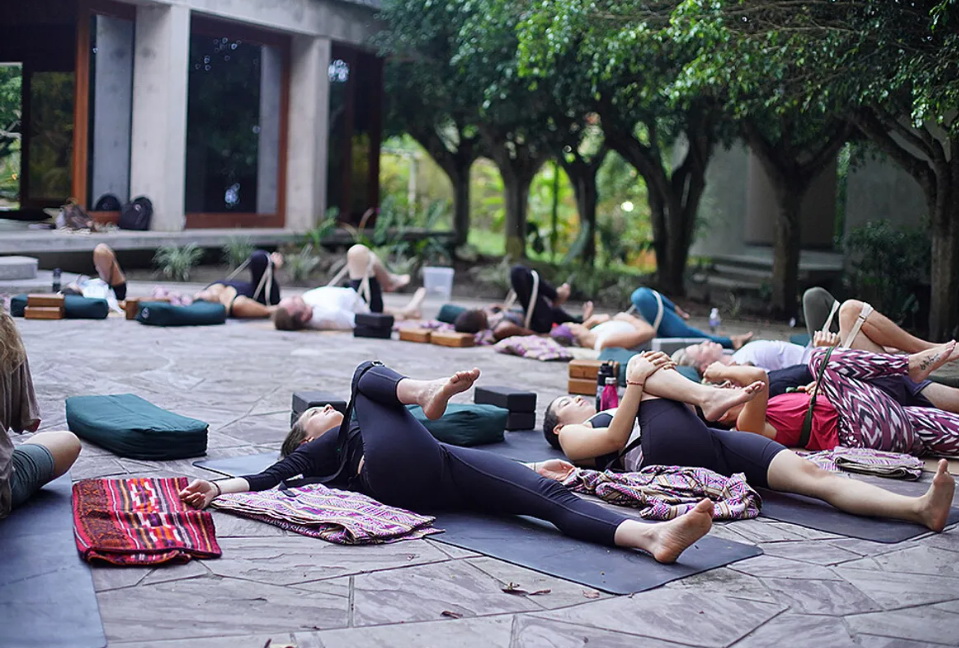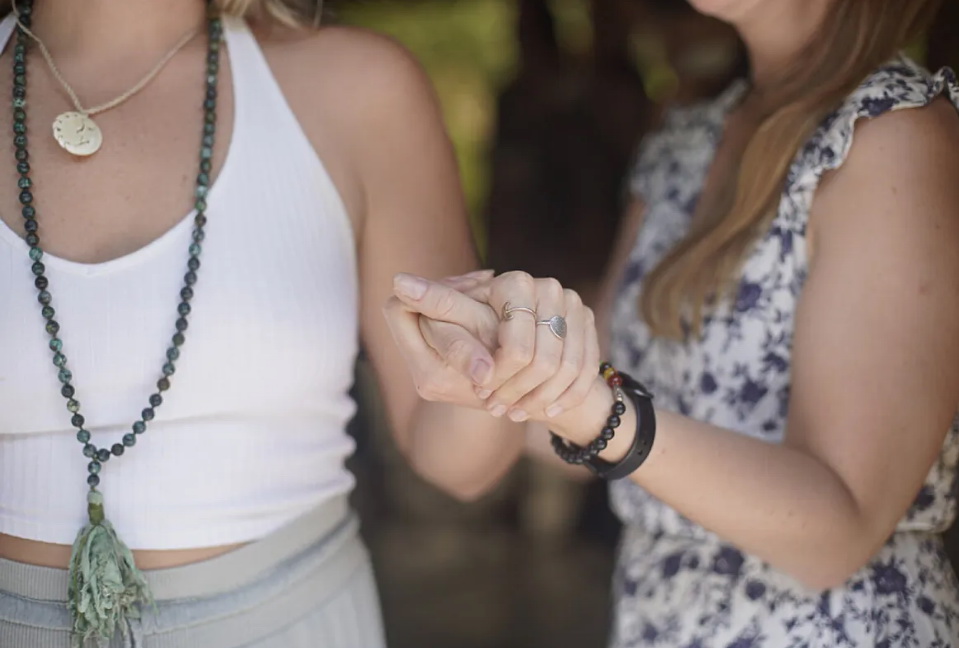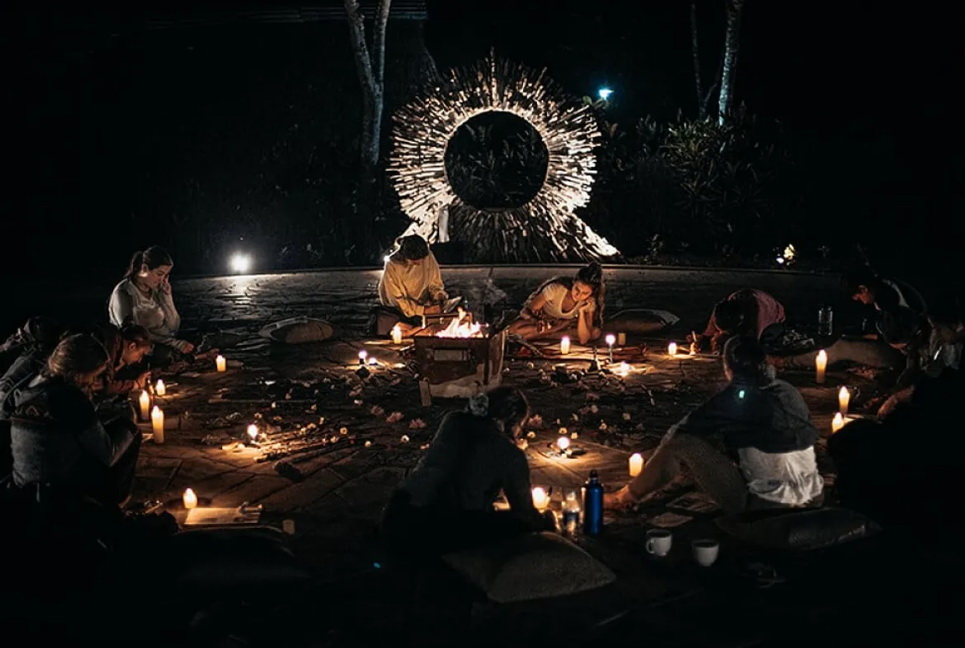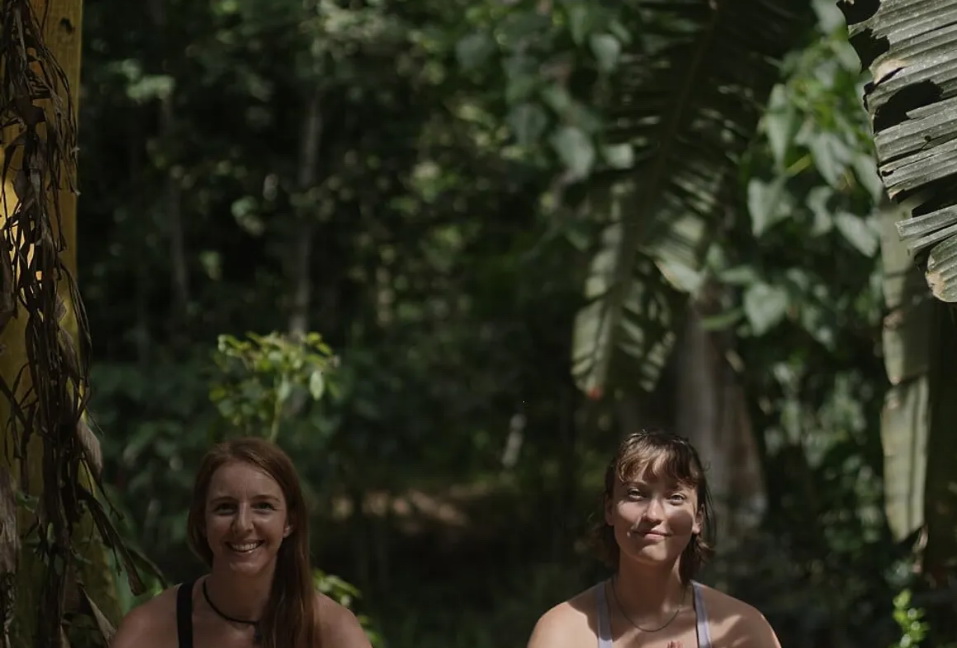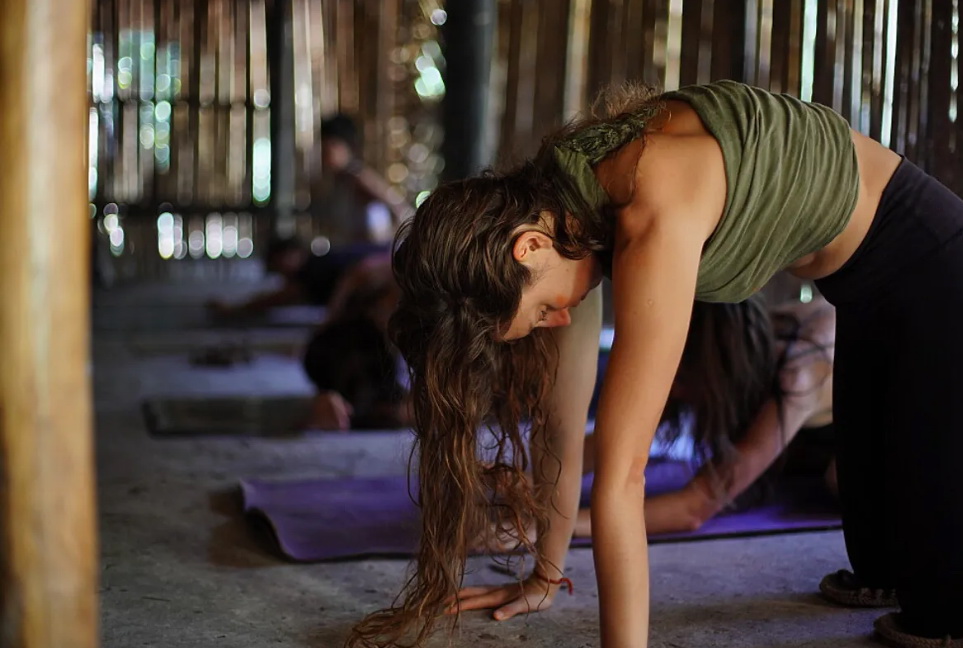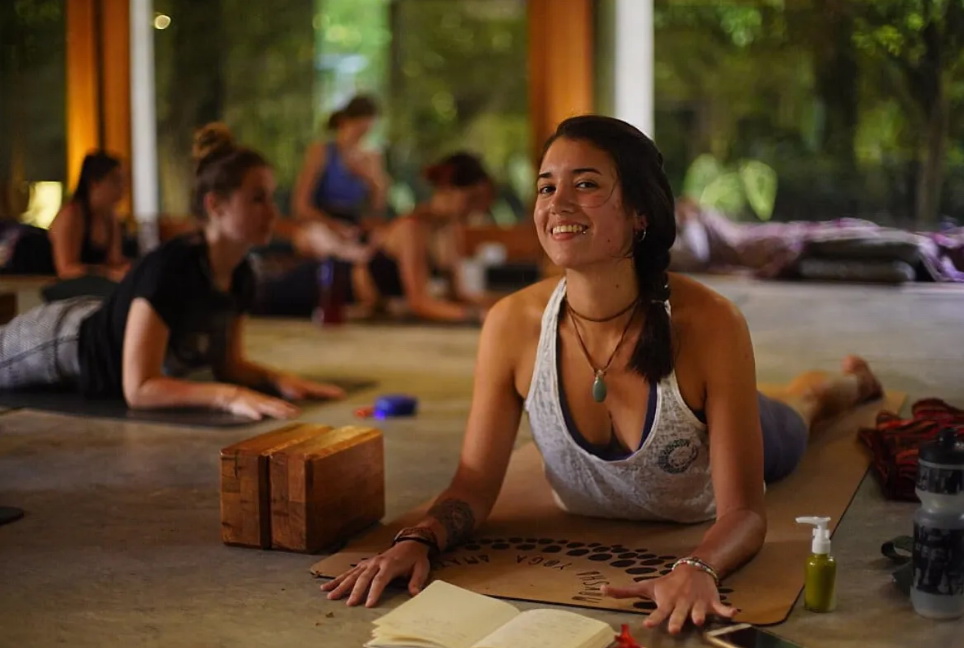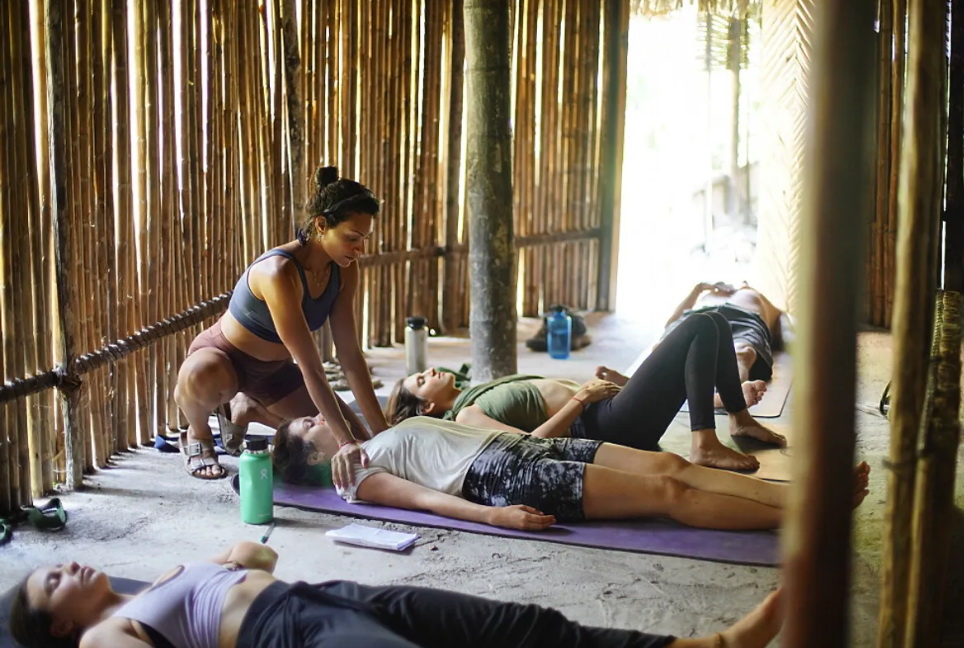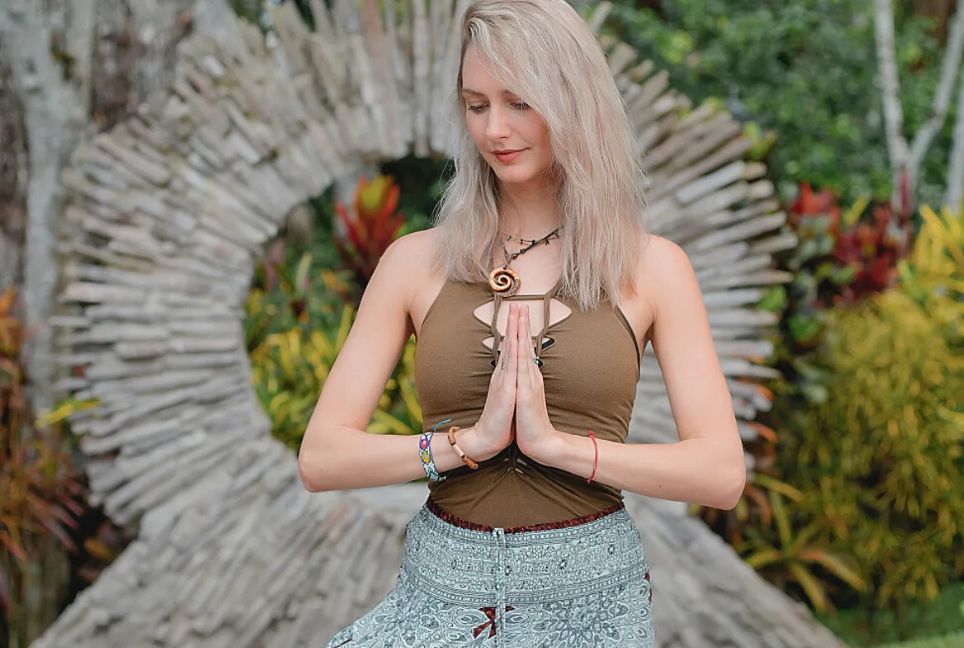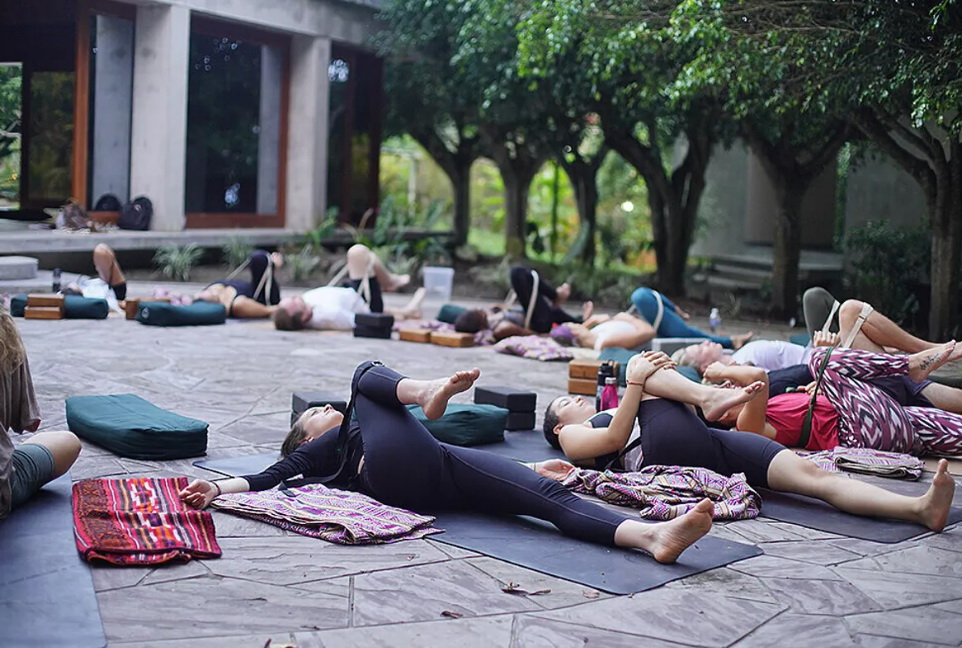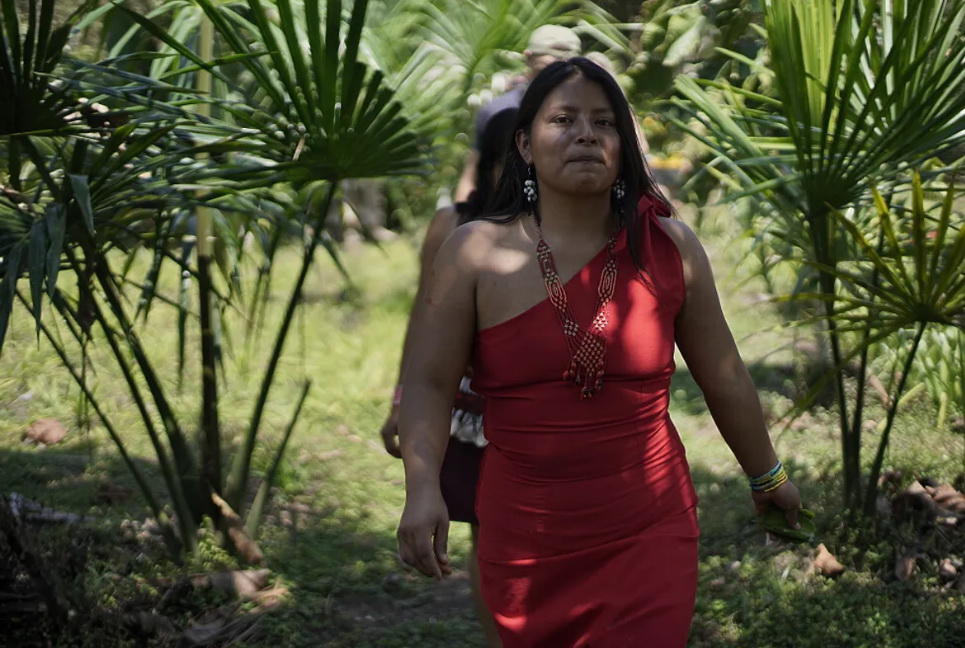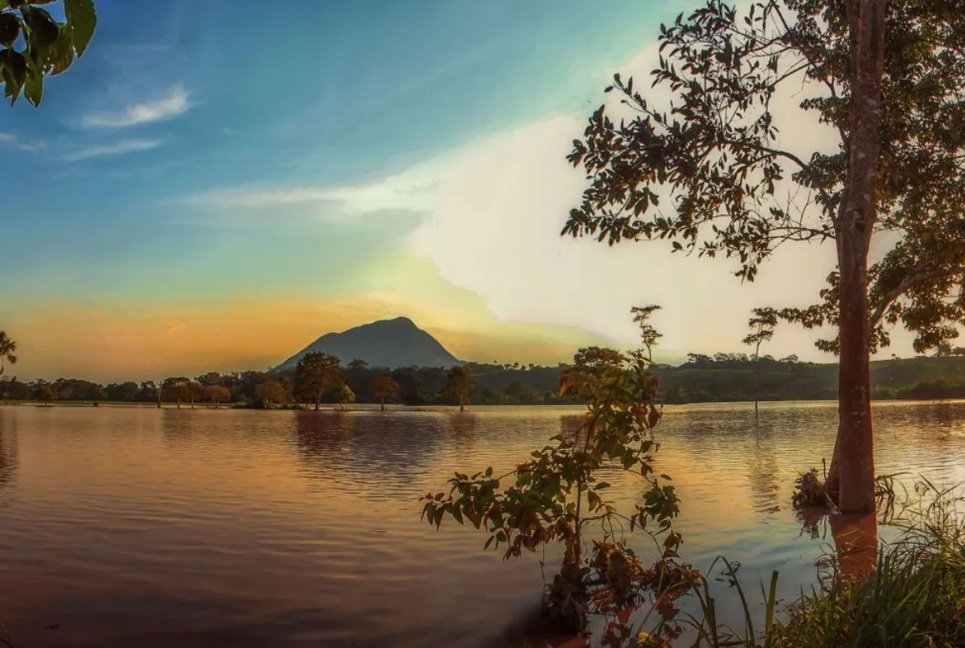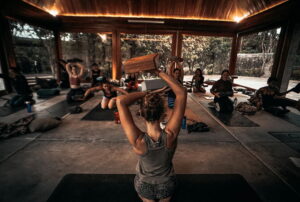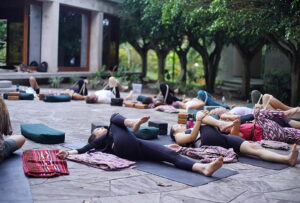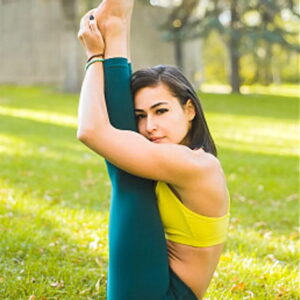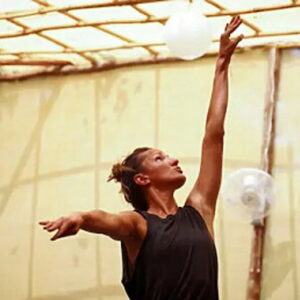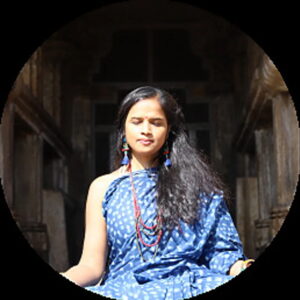Retreat category
Yoga Training retreatsRetreat style
Hatha Yoga.
Vinyasa Yoga.
Tantra Yoga.
Restorative Yoga.
Yin YogaLanguage of instruction
EnglishRetreat Month(s)
in abbreviated form e.g: Jan 24, Feb 24, Jun 24 or e.g: all year round if applicable to your retreat
May, Jun, Jul, Aug, Sep 2023
Max. Group size
10 guestsLevel
Beginner-Intermediate-AdvancedParticipants Welcome
Solo-Couples-FamiliesMeals included
3 mealsDiets available upon request
Vegan, Gluten Free, Organic, Vegetarian, Raw, Dairy-free, Nut-allergy-friendly, Egg-free, Paleo-friendly, Keto-friendly, Diabetic-friendly, Sugar conscious
Description
list the major aspects of your Retreat you would like to bring forward (make it concise)
Moksha Yoga Amazónica prepares you to become a yoga teacher with a foundation in Vinyasa, classical Hatha Yoga postures, and Yin Yoga.This training is composed of theoretical and practical knowledge presented interactively and experientially for you to become confident in leading mixed-level safe and creative classes to the public, all while gaining tools to deepen your yoga practice and advance to the next level.You will learn all this in the idyllic location that is the Amazon rainforest and jungle of Moyobamba, surrounded by nature, flowers, and wildlife.The instructor team focuses on forming yoga teachers who teach more than simply asanas to their students, but who also live a life that is consistent with yogic values, off-the-mat.
Learning Objectives
- Gain an in-depth understanding of Hatha and Vinyasa flow-based, and Yin yoga, covering traditional asanas, alignment, modifications and adjustments, shatkarma, pranayama, meditation, anatomy, biomechanics, subtle body theory, yoga philosophy, yoga ethics, and the business of yoga.
- Develop an ability to plan and guide asana postural practices of various levels across a spectrum from gentle beginner’s classes to vigorous flows that are challenging yet accessible.
- Become confident in adjusting and assisting students in proper postural alignment with both verbal cueing and hands-on adjustments.
- Find your voice and unique personal style as a yoga teacher, and internalize that being a great teacher means being a great student.
- Further your asana postural and off-the-mat yoga practice at home, as well as deepen your yogic lifestyle through an understanding and daily application of the ancient yogic texts toward developing equanimity.
Hatha Yoga
The Sanskrit word ‘Hatha’ means force and alludes to a system of physical techniques comprised of asanas, pranayama, kriyas, mudras, and meditation. As such, Hatha Yoga is an umbrella term for most types of yoga teaching physical postures, meaning nearly every yoga style is Hatha Yoga.With ‘Ha’ meaning the sun and ‘tha’ the moon, this practice aims to balance these two energies, bringing peace to the mind and body, to preparing the body for deeper spiritual practices like meditation. As ancient asanas were not merely postures but instead mudras, they were intended to seal and channel prana within the body.
Hatha Yoga asana practice is relatively gentle, slow, and characterized by longer static posture holds than most other styles. Despite this, however, practice can still be physically and mentally challenging. Classes will typically start with a gentle warm-up and then progress to more physically challenging postures.During this training, you will learn the Hatha Yoga Pawanmukta Series (a warm-up that connects breath to movement, awakens your muscles and joints, and opens up your body) and foundational asanas such as Serpent, Eagle, Bow, Cow Face, Crocodile, Fish, Lion, Camel, the Warriors, and many more.
Vinyasa Yoga
The Sanskrit word ‘Vinyasa’ translates as “to place especially”, and Vinyasa Yoga is thus characterized by fluidly stringing asana postures together, with each movement synchronized with the breath.Vinyasa Yoga is a vigorous and movement-intensive style based on continuous flow from one asana to the next and offers a wide variety of postures which means that, unlike the rigidity of Ashtanga Yoga sequences, no two Vinyasa classes are ever alike.Faster-paced than Hatha Yoga, Vinyasa Yoga classes involve progressively increasing body heat - and sweat - and building strength. It teaches us to cultivate an awareness that links each action to the next, both on the mat and in our lives.
During this training, you will learn Vinyasa Yoga methods to assess the needs of individual students or groups, and then build a complimentary, step-by-step practice to meet those needs.In addition to the postures you will learn during Hatha Yoga classes, you will practice Ashtanga Sun Salutations A & B, Plank Pose, Four-Limbed Staff Pose, Cat-Cow stretches, Side Plank, Cobra, Grasshopper, as well as many other and more advanced asanas such as arm balances, headstands, inversions, and handstands techniques.
Tantra Yoga
Tantra yoga originates from a worship of the Hindu deities that represent the dynamic and static principles of the universe: Shakti (dynamic, creative, feminine) and Shiva (static, destructive, masculine).In Tantra Yoga, practitioners seek to comprehend the continual play between these principles and study the universe through the human microcosm, focusing on the purification and cultivation of prana to awaken the cosmic energy that is present in the human body and allowing it to ascend through the chakras to resolve duality into unity.
The Tantra yoga component of this training is rooted in traditional Hatha yoga and weaves together many practices including Karma, Bhakti, Raja, mantras, chakras, and bandha energy locks to develop your bodies’ subtle energies, working to bring the spiritual and material worlds into one. Through the exploration of these energies, your life’s purpose and connection with others can be understood in a new dimension.Not predominantly sexual but orgasmic, Tantra Yoga is about intimacy, which can either mean with a partner physically or by yourself with your breath, thoughts and aspirations.
Whether practiced alone to get in touch with your subtle body energies or with a partner to deepen your relationship, Tantra Yoga will help you get in tune with your authentic self and break down barriers in a unique and meaningful way.During this training, you will learn theoretical and practical aspects of Tantra Yoga and postures you can practice with a partner for deeper bonding.
Course Content
The instructors are always present during classes and practice, observing and making recommendations for pose modifications and adjustments into proper alignment.You will learn the fundamentals of yoga, its philosophies, and ethics, and how to deepen not only your physical but also your mental, spiritual, and emotional practice. There will be observations and feedback on your practice and practicums by the lead trainers so that you learn areas of improvement specific to you.
The physical component of this training consists of morning kriya cleansing techniques, two asana postural practices and two meditations daily, a daily body-alignment practicum where you will learn hands-on adjustments, pose modifications and verbal cueing, and special clinics on arm balances and headstands.You will learn proper hand placement and weight distribution for foundational postures so that you develop good habits to avoid injuries and find more ease of movement and balance as you progress towards more advanced postures.
You will also learn proper sitting positions to activate your root chakra during meditation, and exercises you can practice to make sitting for long periods not painful but instead enjoyable.You will take part in peer-to-peer class observations and assist others during their practicums in addition to teaching your classes so that when you complete the training you have advanced your practice to a much higher level and can apply both the theoretical and practical knowledge to your practice and teaching.
The theoretical component of this training covers both traditional Indian yogic knowledge on shatkarma and pranayama’s effects on the body, a study of yoga philosophy through discussing ancient Vedic texts, a study of Ayurveda and nutrition, the aims and effects of deep breathing and meditation, and a study of the subtle body, but also modern anatomy, physiology, and biomechanics.This 200-hour yoga teacher training program incorporates training hours in the following educational categories and topics:
Asana Postural Practice Techniques
- Breakdown and analysis of more than 80 classical Hatha and Vinyasa Yoga postures, including arm balances and inversions
- Pose modifications for injured people and prenatal yoga, and variations for different student levels
How to Use Yoga Props
- Blocks, bolsters, straps, and blankets
- How to utilize the wall in your yoga practice and classes
Specialized Workshops and Clinics
Themed workshops will cover a wide range of key asanas and body parts, such as standing, balancing, and seated postures, forward bend, back-bends, hip openers, downward-facing dog, chair, the moons, the warriors, hip openers, twists, inversions, headstands, handstands, wrists health and conditioning, and core strengthening.
Teaching Practice
You will start teaching from day one on a progressive scale, beginning with short lessons to small groups of students and culminating in full open classes to the whole group. The build-up of the asana classes will be smooth and gradual, facilitating everyone to develop their talents.
Constructive feedback about your teaching will be given by both fellow students and trainers to allow you to hear students’ perspectives, improve your technique and cueing, and find your unique voice and style as a teacher. Some of the things you will learn and practice include:
- Teaching practicums
- Receiving feedback from peers and trainers
- Observing others teaching
- Listening to and giving your feedback
- Learning to give hands-on adjustments
- Learning verbal alignment cues
- Communication skills for compassion and non-competitiveness
- Teaching methodology, including safe sequencing
- Principles of demonstration
- Teaching styles and the qualities of a great teacher
- Voice projection and floor presence
- Pranayama, mudras, and bandhas locks
The Process of Learning
- Learning styles and student needs
- Planning and structuring a class
- Dealing with injuries and contraindications
- Safety precautions and modifications
Shatkarma/Shatkriya Body Cleansing
Shatkarma is the Sanskrit term for the yogic purification techniques (kriyas) of the body as outlined in the "Hatha Yoga Pradipika." The purpose of these cleansing techniques is to keep the body clean and healthy and to prepare for the main work of yoga towards moksha, or liberation. Shatkarmas are said to remove toxins and impurities blocking the flow of prana in the body, making pranayama and meditation practice easier.
Some of the Shatkarma techniques you will learn and practice include:
- Nauli
- Agni Saar
- Kapalabhati
- Trataka
Pranayama Yogic Breathing: Breath Expansion, Restriction, and Retention
As breath is linked to energy flow, moods and even longevity, breathing theory and practice will be studied in various classes, from pranayama, meditation, asana, anatomy, philosophy, and workshops.
You will learn the different types of prana, breathing, and techniques to cool or warm the body and calm the mind, and practice the following:
- Nadi Shodhana (alternate nostril breathing)
- Sheetali (cooling breath)
- Shitkari (hissing breath)
- Ujjayi (victorious breath)
- Bhastrika (bellows breath)
- Simhasana (lion’s breath)
- Swana (panting dog breath)
- Bhramari (humming bee breath)
Meditation
- Breathing Meditation
- Trataka (candlelight meditation)
- Active Meditations
- Yoga Nidra
Mudras and Bandhas
You will learn foundational mudras and their applications, such as various hand, but also head, postural, and perennial mudras. You will also learn and practice the 4 main bandhas energy locks: throat lock, root lock, abdominal lock, and great lock.
Philosophy
Through the study of ancient Vedic texts and open discussion, philosophy classes will touch on many important and interesting points that deal with human existence and how the practice of yoga can help us reach higher states of consciousness and happiness.You will learn about the ancestral trilogy of yoga: Bhakti or the yoga of devotion, Karma or the yoga of selflessly performing actions and service without expecting anything in return, and of Jnana yoga, an analytical self-inquiry into one’s own true nature through self-observation and conscious attention.
We will discuss how to experientially apply these principles to our yoga teacher training experience together, as well as beyond in our daily lives. Some of the other topics you will learn about include:
- The meaning of yoga, its origins, and history
- The eight-limb path of yoga according to Patanjali
- The Vedas and the 12 schools of Indian philosophy
- The aim of yoga, modification of the fluctuations of the mind, mental disposition, levels of preparation, the meaning and benefits of Om chanting, and Samadhi
- The obstacles on the path of yoga, physical and mental disturbances caused by an un-concentrated mind, means to overcome obstacles, and methods to control the fluctuations of the mind
- Lifestyle and ethics for yoga practitioners and teachers
Anatomy and Biomechanics
Classes will cover both physical anatomy, physiology, and biomechanics such as bodily systems, organs, muscle groups, and the major joints, but also subtle body anatomies such as the chakras, nadis, and koshas.
This includes both the study of the subjects and the application of their principles to yoga practice, such as benefits or contraindications.
Some additional topics to be covered include:
- The skeletal, muscular, respiratory, nervous, circulatory, endocrine, digestive, sympathetic and parasympathetic systems
- Fascia and connective tissue
- The Golgi tendon organ
- The neck, shoulders, wrists, spine, hips, pelvic floor, knees, and ankles
Professional Development
In order for you to gain the tools necessary to succeed in your yoga teaching career, you will learn about the various avenues you can take in your teaching journey, from studio employee to freelancer, organizing workshops and retreats, as well as how to market yourself or your studio. Some of the topics to be covered include:
- Understanding the difference between being certified and being registered
- Studio employee vs. independent contractor work options - pros and cons
- Private class methods
- Roles and responsibilities as a yoga teacher
- Trauma and betterment methods for students
- Networking, marketing, and advertising
- Insurance, legal, and tax considerations
One-on-One Mentorship Integration Session
Because feedback is essential for growth, as part of your professional development you will receive a one-on-one mentorship session with an instructor, which will serve both as an opportunity for you to ask questions or voice any concerns you may have, while the instructor will compassionately share feedback from his or her observations thus far. Through constructive conversation, you will be assigned an action item for growth.
Yoga Nidra
You will take part in a class on Yoga Nidra methods as well as a practicum so that you can both learn the theory behind reaching this deepest state of relaxation while maintaining full consciousness and also experience it for yourself.
Sound Therapy Sessions
We live in a vibratory universe where everything we sense, feel, see and touch is pure energy, or particles of energy vibrating. As such, the basic principle of sound healing is this concept of resonance of vibratory frequencies of objects, which includes human beings.
If we are not resonating with some part of ourselves or our surroundings, we become dissonant and without harmony, which can create illness.
Although healing with sound is believed to date back to ancient Greece, recent research has linked music to a number of health benefits, from boosting immune function and lowering stress levels to improving your body’s functions such as blood pressure, and even breathing.
Sound is measured in terms of Frequency of Hertz (Hz), and sound therapy is the application of healing frequencies to the physical and subtle energy fields around the body.
During this training you will take part in sound therapy/healing sessions, witnessing a variety of Indian, Tibetan, and Andean instruments and tools such as tuning forks, singing bowls, ocean drums, rain, and thunder-making instruments, Koshi bells, hang drums, native double octave flutes, chanting, and so on.
Excursions
Keeping true to making this yoga teacher training experiential and not confined to a classroom, you will take part in the following excursions:
- Karma Yoga Volunteering experiential excursion, where we will teach yoga asanas to disadvantaged children, plant trees to reforest areas where endangered animal and bird species live, paint houses or murals to gentrify poor neighborhoods, and/or conduct river beach clean-ups the help the environment.
- Tingana Eco-Reserve to experience the beauty and authenticity of this refuge for wild animals that take you canoeing on a discovery trip through Amazonian wetlands filled with gigantic Renaco trees and mangroves, where you can listen to jungle soundscapes and observe birds, monkeys, sloths, and other animals in their natural habitat. We will bring our yoga mats to the reserve to have our asana practice, meditation, and some of our lectures in full open nature for the day.
- El Bosque de las Nuwas: women's community that preserves medicinal plants.
- Waqanki Hummingbird and Orchid Sanctuary to observe more than 19 different species of hummingbirds and various orchid flowers.
Certification
Upon completion of this yoga teacher training, you will receive a certificate of completion from Moksha Yoga Amazónica, a Registered Yoga School (RYS) with the Yoga Alliance, and become eligible to register with Yoga Alliance as a 200-hour Registered Yoga Teacher (RYT200), allowing you to teach worldwide.
You will also receive a 20hr certificate for Yoga Alliance Continuing Education in Ayurvedic Self-Care Daily Routines
We look forward to welcoming you as part of our community.

